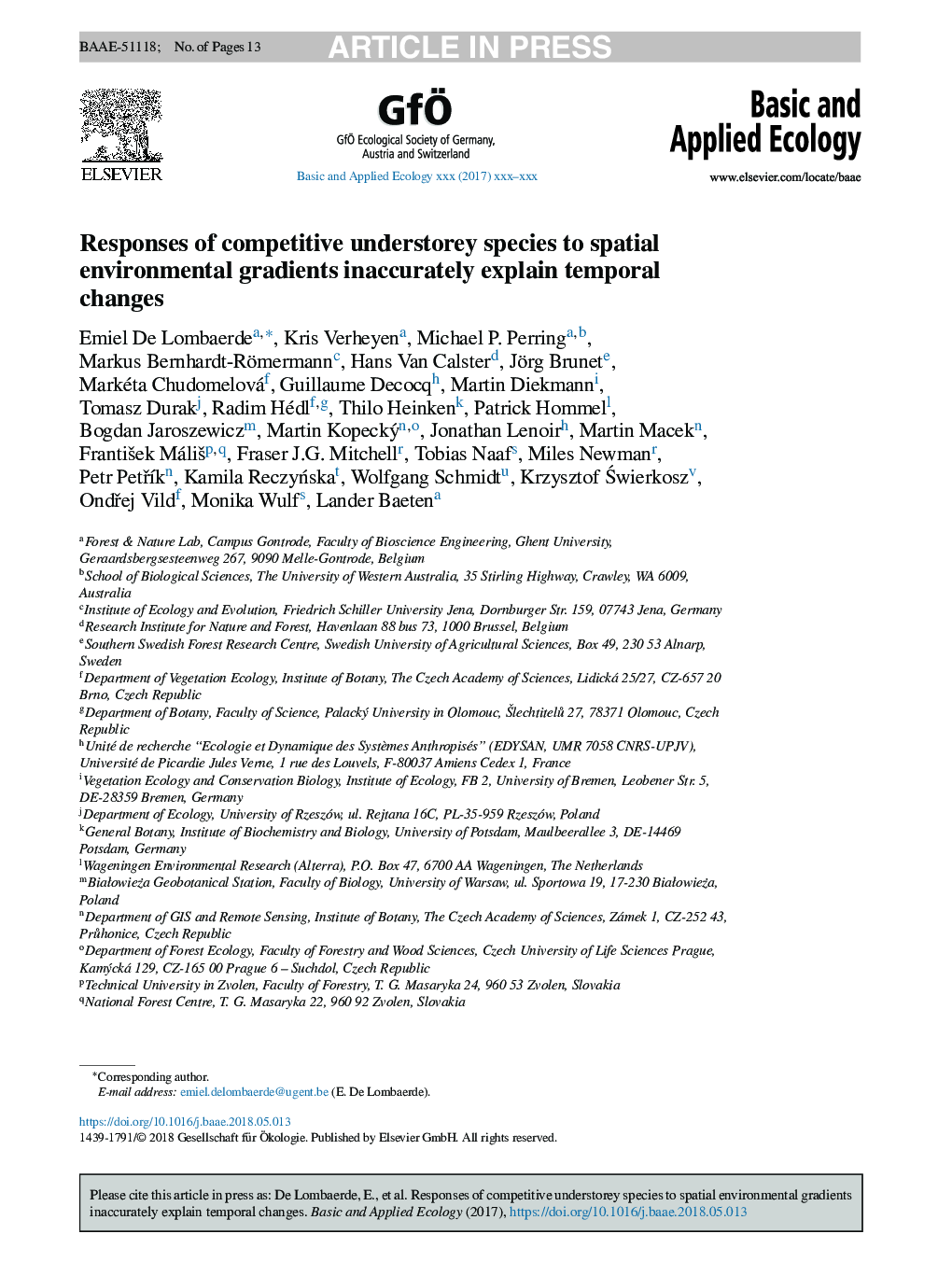| Article ID | Journal | Published Year | Pages | File Type |
|---|---|---|---|---|
| 8846981 | Basic and Applied Ecology | 2018 | 13 Pages |
Abstract
Understorey plant communities play a key role in the functioning of forest ecosystems. Under favourable environmental conditions, competitive understorey species may develop high abundances and influence important ecosystem processes such as tree regeneration. Thus, understanding and predicting the response of competitive understorey species as a function of changing environmental conditions is important for forest managers. In the absence of sufficient temporal data to quantify actual vegetation changes, space-for-time (SFT) substitution is often used, i.e. studies that use environmental gradients across space to infer vegetation responses to environmental change over time. Here we assess the validity of such SFT approaches and analysed 36 resurvey studies from ancient forests with low levels of recent disturbances across temperate Europe to assess how six competitive understorey plant species respond to gradients of overstorey cover, soil conditions, atmospheric N deposition and climatic conditions over space and time. The combination of historical and contemporary surveys allows (i) to test if observed contemporary patterns across space are consistent at the time of the historical survey, and, crucially, (ii) to assess whether changes in abundance over time given recorded environmental change match expectations from patterns recorded along environmental gradients in space. We found consistent spatial relationships at the two periods: local variation in soil variables and overstorey cover were the best predictors of individual species' cover while interregional variation in coarse-scale variables, i.e. N deposition and climate, was less important. However, we found that our SFT approach could not accurately explain the large variation in abundance changes over time. We thus recommend to be cautious when using SFT substitution to infer species responses to temporal changes.
Keywords
Related Topics
Life Sciences
Agricultural and Biological Sciences
Animal Science and Zoology
Authors
Emiel De Lombaerde, Kris Verheyen, Michael P. Perring, Markus Bernhardt-Römermann, Hans Van Calster, Jörg Brunet, Markéta Chudomelová, Guillaume Decocq, Martin Diekmann, Tomasz Durak, Radim Hédl, Thilo Heinken, Patrick Hommel, Bogdan Jaroszewicz,
